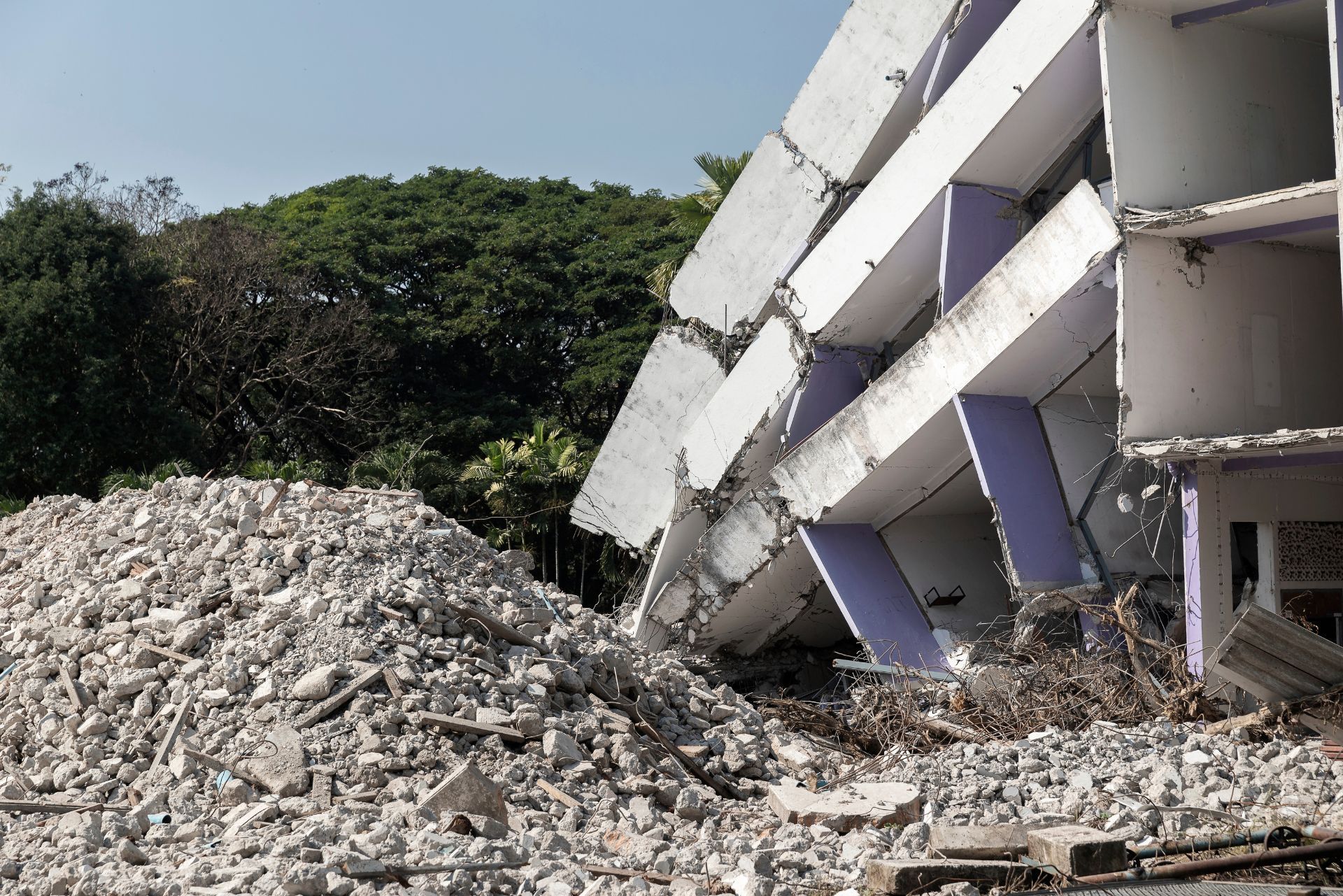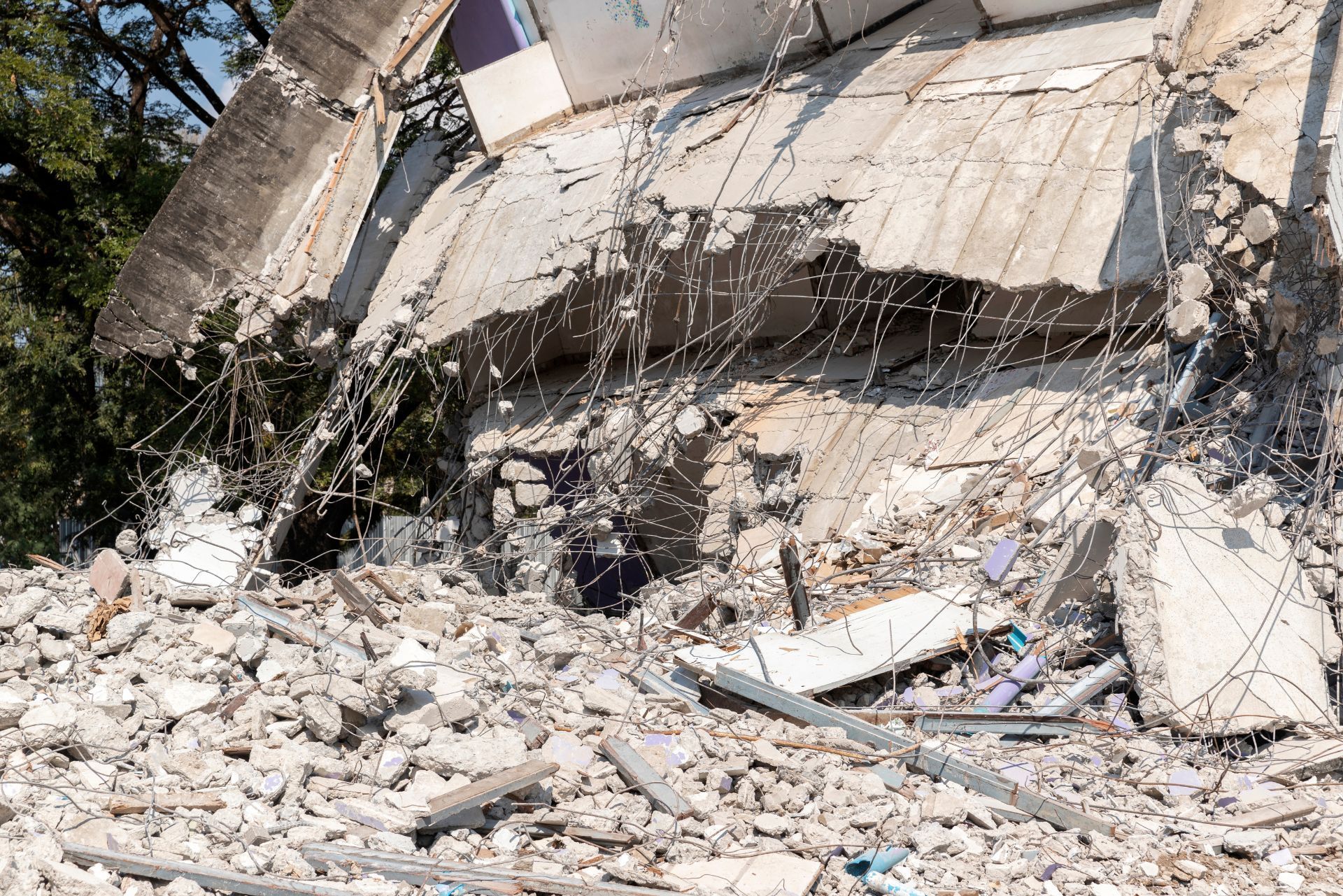Top 3 Recommended Policies

By: David Graves
Licensed Personal Insurance Specialist
425-320-4280
Washington’s evergreen mountains and glittering coastlines sit atop one of the most complex seismic zones in North America. The Cascadia Subduction Zone offshore, a network of deep-crust faults under Puget Sound, and scores of shallow crustal fractures create a real, if often underestimated, earthquake threat. As new residents pour into Seattle, Tacoma, Spokane, and the booming suburbs in between, understanding how to guard homes and financial futures against earthquake damage has become essential. The following guide explores the unique risk profile of the state, explains how earthquake insurance works here, and lays out the practical steps homeowners, condo owners, and renters can take to protect themselves.
Understanding Washington’s Seismic Landscape
Most people associate major U.S. earthquakes with California, yet data from the United States Geological Survey (USGS) shows that western Washington experiences dozens of small tremors every single week. The agency’s 2023 National Seismic Hazard Model assigns large portions of King, Pierce, Thurston, and Snohomish counties a 10–20% chance of a magnitude 6.5 or greater earthquake within the next 50 years. For perspective, the damaging Nisqually quake of February 28, 2001 registered magnitude 6.8, injured 400 people, and caused $2 billion in property losses.
The bigger worry is the Cascadia Subduction Zone, which runs roughly 700 miles offshore from northern California to Vancouver Island. Geologists believe it can unleash magnitude 8–9 “megathrust” earthquakes roughly every 300–500 years. The last one occurred in 1700. That timeline puts the region in the window for another event, and researchers at Oregon State University estimate a 10–15% probability of a magnitude 9.0 Cascadia rupture in the next half-century.
In addition to the immediate threat posed by these potential megathrust events, the geological features of Washington state contribute to a complex seismic landscape. The region is not only affected by the Cascadia Subduction Zone but also by the presence of numerous fault lines, including the Seattle Fault and the South Whidbey Island Fault. These faults can produce significant earthquakes independent of the subduction zone activity, further complicating the risk assessment for residents. The Seattle Fault, for instance, is known to have generated a magnitude 6.5 earthquake around 900 A.D., which caused widespread damage in the area that is now the city of Seattle.
Moreover, the implications of these seismic risks extend beyond immediate physical damage. The potential for infrastructure failure, such as the collapse of bridges and buildings, poses a significant threat to public safety and emergency response capabilities. Local governments and organizations are increasingly focusing on earthquake preparedness, implementing stricter building codes, and conducting community drills to ensure that residents know how to respond in the event of a major quake. Educational initiatives are also being developed to raise awareness about the importance of emergency kits and communication plans, emphasizing the need for individuals and families to be proactive in safeguarding their lives and property against the unpredictable nature of seismic activity in this geologically dynamic region.

Why Standard Homeowners Policies Don’t Cover Earthquakes
Many Washington residents assume their regular homeowners insurance pays for quake damage, yet virtually all standard policies contain a specific exclusion for earth movement. Fires, burglaries, and burst pipes are rated as “ordinary” risks; earthquakes are classified by insurers as catastrophic perils, similar to floods and hurricanes. Carriers separate them because the potential losses are wide-scale and correlated—many homes are damaged at once—making it difficult to spread risk.
Without an endorsement or standalone earthquake policy, owners must pay out of pocket to repair structural cracks, foundation shifts, chimney collapses, and the contents ruined by shaking. Mortgage lenders that require full hazard coverage almost always waive quake insurance, leaving decision-making up to homeowners. That flexibility can feel like a cost-saving blessing—until shaking begins.
In addition to the immediate physical damage caused by an earthquake, homeowners also face the daunting task of navigating the aftermath. The emotional toll of experiencing such a natural disaster can be profound, as families grapple with the loss of their homes and the disruption of their lives. The process of rebuilding can be lengthy and complicated, often requiring extensive inspections and permits, which can further delay recovery. For those who live in areas with a high seismic risk, the absence of earthquake coverage can lead to financial ruin, as repairs can easily run into the tens of thousands of dollars.
Moreover, the unpredictability of earthquakes adds another layer of concern. Unlike other natural disasters, such as hurricanes, which can be forecasted and prepared for, earthquakes strike without warning. This lack of predictability makes it even more crucial for homeowners to consider their options for earthquake insurance. Many residents may not realize that the risk of earthquakes is not limited to the well-known fault lines; even areas considered low-risk can experience seismic activity. Therefore, understanding the nuances of earthquake coverage is essential for safeguarding one’s property and ensuring peace of mind in an unpredictable world.
How Earthquake Insurance Works in Washington
Unlike California, Washington does not have a public earthquake facility such as the California Earthquake Authority. Instead, coverage comes from private insurers that either:
- Add a rider or endorsement onto an existing homeowners, condo unit-owners, or renters policy.
- Sell a standalone earthquake contract underwritten by a specialty company.
Both options function similarly. They protect the dwelling, detached structures, personal property, and loss of use (additional living expenses) after an earthquake or related aftershock. Coverage is triggered once an event is recorded by the Pacific Northwest Seismic Network and officially labeled an earthquake.
Deductibles differ dramatically from standard policies. Instead of a flat figure like $1,000, deductibles are expressed as a percentage of the insured value—commonly 10%, 15%, 20%, or 25%. For a $600,000 house, a 15% deductible means the owner must absorb the first $90,000 of repair bills before the insurer pays. High deductibles feel daunting, yet they enable insurers to offer premiums that middle-class families can afford.
In Washington, the risk of earthquakes is not just a theoretical concern; the state sits on the Cascadia Subduction Zone, where the Juan de Fuca Plate meets the North American Plate. This tectonic activity has the potential to produce significant seismic events, and historical records indicate that major earthquakes have occurred in the region, some with devastating effects. Residents are encouraged to assess their risk and consider earthquake insurance as part of their overall disaster preparedness plan. Furthermore, many insurers offer additional resources and support for policyholders, including risk assessments and recommendations for retrofitting homes to withstand seismic activity.
Additionally, the process of obtaining earthquake insurance can vary widely among different insurers, with some offering more comprehensive coverage options than others. It is essential for homeowners to shop around and compare policies, taking into account not just the premiums and deductibles but also the specific terms and conditions of coverage. Some policies may include provisions for temporary housing costs in the event that a home becomes uninhabitable due to earthquake damage, while others may not. Understanding these nuances can help homeowners make informed decisions that best protect their investments and ensure their families' safety in the event of an earthquake.
Cost Factors: What Determines Your Premium?
Prices vary widely, but a 2024 survey of eight major carriers in Washington found homeowners paying between $1.50 and $3.25 per $1,000 of coverage. That places the annual premium for a $500,000 dwelling at roughly $750–$1,625. The span is large because underwriters study several variables:
1. Location and Soil Type Homes built on soft fill, tidal flats, or river deltas shake harder than those on bedrock. Neighborhoods like Seattle’s Pioneer Square and Tacoma’s port district are rated higher risks than certain Eastside plateaus. Additionally, the proximity to fault lines and historical seismic activity in the area can significantly influence risk assessments. For instance, homes near the Cascadia Subduction Zone may face higher premiums due to the potential for significant earthquake events.
2. Dwelling Age and Construction Wood-frame houses with continuous foundations generally perform better than unreinforced masonry structures. Newer builds benefit from stricter seismic codes adopted after 1997. Moreover, the materials used in construction can also play a crucial role; homes built with reinforced concrete or steel frames are often rated more favorably. Homeowners considering renovations or upgrades may find that investing in seismic retrofitting can not only enhance safety but also lead to lower insurance premiums over time.
3. Elevation and Landslide Potential Shaking can trigger landslides on steep hillsides common around Puget Sound. If a parcel sits on a mapped slide zone, premiums climb. In addition to the steepness of the terrain, factors such as vegetation cover and drainage systems can also affect the risk of landslides. Homeowners in these areas may want to consult with geotechnical engineers to assess their property’s vulnerability and explore mitigation strategies that could help reduce their insurance costs.
4. Coverage Limits and Deductible Opting for higher dwelling or contents limits raises cost, whereas choosing a 20% deductible instead of 10% can shave 25–40% off the annual premium. It’s essential for homeowners to carefully evaluate their assets and potential losses to determine the most appropriate coverage levels. Additionally, some policies may offer optional add-ons, such as loss of use coverage, which can provide financial support if a home becomes uninhabitable due to an earthquake, further influencing the overall premium.
5. Customer Loyalty and Bundling
Some carriers discount earthquake endorsements 5–10% when they also insure auto or umbrella coverage for the same customer. This bundling not only simplifies management of multiple policies but can also lead to significant savings. Furthermore, long-term customers may benefit from loyalty programs that reward them with lower rates or additional coverage options as they maintain their policies over the years.
Earthquake Coverage for Different Property Types
Single-Family HomesHomeowners need dwelling coverage high enough to rebuild from the foundation up. Because earthquake damage often concentrates on chimneys, crawl-space piers, and shear walls, a professional reconstruction estimate ensures the dwelling limit reflects real replacement costs, not market value.
CondominiumsWashington condo associations typically insure the building’s exterior frame under a master policy. That policy may or may not include earthquake protection, and many carry sky-high deductibles spread among unit owners after a quake. Individual condo owners should verify the master certificate, then purchase a unit-owners earthquake policy to cover interior walls, flooring, improvements, and personal property. Special Loss Assessment coverage helps pay an association-imposed earthquake deductible—up to $100,000 on some forms.
RentersRenters buy contents-only earthquake insurance, which is surprisingly inexpensive—often under $150 per year for $50,000 of personal property, because no dwelling coverage is included. Additional Living Expense (ALE) protection is critical for tenants who may be displaced for months while landlords repair structural damage.
Selecting the Right Deductible and Coverage Limits
Choosing between a 10% and 25% deductible is more than a budgeting exercise; it involves estimating how severe structural damage would be in a moderate quake versus a massive one. Engineers at the University of Washington estimate that a shallow magnitude 6.5 event along the Seattle Fault could force 30% of single-family houses in south Seattle to undergo repairs exceeding 10% of their replacement value. Under that scenario, a homeowner with a 10% deductible might see no insurer payout, whereas a 20% deductible saves hundreds per year but still leaves the owner exposed.
One approach is to match the deductible to emergency savings. If a two-income household can access $100,000 between cash reserves and a home-equity line, a 15% deductible on a $600,000 house may be acceptable. Those with little liquidity could keep the deductible to 10% even if the premium is slightly higher.
Mitigation and Retrofitting: Lowering Risk and Saving Money
Seattle’s Department of Construction estimates that roughly 72,000 pre-1976 wood-frame homes in King County remain unbolted to their foundations. A basic retrofit—adding anchor bolts and plywood shear panels—usually costs $4,000–$7,000 and can halve the probability of catastrophic damage. Insurers increasingly reward documented retrofits with premium credits of 10–25%.
For older brick or stone buildings, reinforcing walls with steel ties and grout injections is more involved, running $25,000–$100,000. While upfront costs are steep, landlords often recoup investments through reduced insurance rates and higher tenant confidence. Beyond financial incentives, retrofitting keeps families safe, reduces recovery time, and speeds up the claims process by limiting structural failure.

Filing a Claim After a Quake: What to Expect
After an event, insurers deploy catastrophe teams that handle nothing but earthquake claims. Policyholders should photograph visible damage, turn off utilities if leaks or sparks appear, and contact the insurer’s 24-hour hotline immediately. Adjusters may take photographs, drill holes to inspect cripple walls, or order an engineer report.
Because deductibles are high, owners sometimes wait a few days to gather repair bids before formally opening a claim. That tactic is permissible, yet carriers still expect prompt notice. Once an adjuster verifies that costs exceed the deductible, advance payments for debris removal and temporary housing often arrive within seven to ten days.
Common Myths and Misconceptions
“Federal aid will rebuild my house.”Federal Emergency Management Agency (FEMA) grants for individuals cap at $41,000 in 2024 and rarely exceed $12,000. Homeowners bear the bulk of rebuilding costs.
“I’m inland, so I’m safe.”Spokane, Yakima, and even Walla Walla sit near crustal faults capable of magnitude 6 quakes. Insurance rates east of the Cascades are lower, but the risk is far from zero.
“New homes don’t need coverage.”Modern codes improve life safety, not property preservation. A 2021 study by the Pacific Earthquake Engineering Research Center found that code-compliant houses can still suffer damage equal to 5–15% of replacement value in a moderate quake—well beyond most family savings.
Practical Steps for Washington Residents Today
1. Use the USGS “Did You Feel It?” map to gauge your zip code’s shaking history. Familiarity with local faults sharpens risk perception.2. Request a replacement-cost estimate from a licensed contractor or insurance agent. Updating dwelling values annually prevents gaps.3. Compare at least three earthquake quotes. Some companies’ premiums differ by 40% for identical coverage.4. Bundle renters or homeowners, auto, and quake coverage when possible. The combined discount can offset rising premiums.5. Begin a retrofit savings fund. Even setting aside $50 monthly builds a cushion for anchor-bolt upgrades within three to five years.6. Inventory household belongings with a smartphone video. A quick sweep of each room simplifies proof of loss later.7. Create a family earthquake plan: drop-cover-hold drills, out-of-state contact numbers, and a two-week food and water supply.
Earthquake insurance will not prevent the next tremor, yet it can transform a life-altering catastrophe into a manageable repair job. With informed choices about coverage, deductibles, and mitigation, Washington residents stand far better prepared for whatever the geology of the Pacific Northwest decides to deliver.

